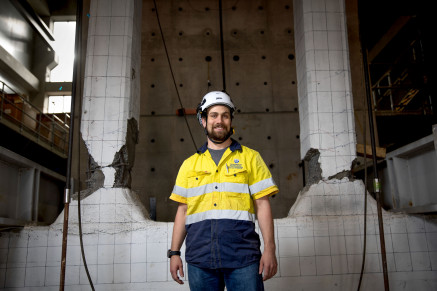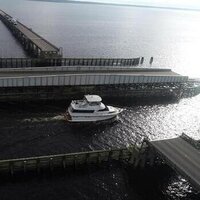Testing a decommissioned bridge well beyond the displacement of a significant earthquake has improved understanding of New Zealand’s infrastructure resilience.
“We beat the snot out of it, well beyond the displacement we would expect in a large earthquake, and the structures performed extremely well,” explained lead researcher Dr Lucas Hogan of the University of Auckland.
The decommissioned Whirikono Bridge, which dates from the 1930s, was replaced in 2020 by a wider structure over the Manawatu River and Moutoa floodplain by Waka Kotahi.
The team ran seismic tests on the bridge’s foundation piles on their original site. Then they brought three of the piers into the lab at the University of Auckland for further testing.

Dr Lucas Hogan stands before the bridge testing equipment in the laboratory at the University of Auckland. Credit: Chris Loufte/Toka Tu Ake EQC
Understanding of seismic risk has improved since many of New Zealand’s bridges were built, and there is uncertainty around their resilience. The results suggested Whirikono Bridge still had plenty of strength and the data could inform analysis of similar bridges. The researcher are also exploring retrofit solutions to improve the longevity of concrete bridges.
Funding for the project came from New Zealand’s natural disaster research entity Toka Tu Ake EQC; and QuakeCoRE, the New Zealand centre for earthquake resilience.



